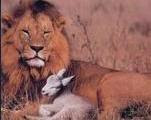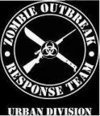Tuesday, March 24, 2009
Another reason women aren't in combat units
Excerpt, strategypage.com
Currently, the lightest load carried, the "fighting load" for situations where the troops were sneaking up on the enemy and might be involved in hand-to-hand combat, is 63 pounds. The "approach march load," for when infantry were moving up to a position where they would shed some weight to achieve their "fighting load", is 101 pounds. The heaviest load, 132 pounds, was the emergency approach march load, where troops had to move through terrain too difficult for vehicles. As in the past, the troops often ignored the rules and regulations and dumped gear so they could move, or keep moving.
In Afghanistan, the problem is made worse by the high altitudes (up to 5,000 meters) the troops often operate at. The researchers found that in Afghanistan, even though the infantry were in excellent physical shape, troops would sweat nearly 20 ounces of fluid an hour while marching at high altitudes in bright sunlight in moderate temperatures. That meant more weight, in water, had to be found to keep these guys going.
A lot of the weight carried is essential stuff. Weapons, for example. The Army saved two pounds in the 1960s when they switched from the M-14 rifle to the M-16. A lot of weight was saved in ammo carried as well, because a hundred M-16 bullets weighed two pounds less than a hundred M-14 ones. Troops usually carry 200-300 rounds of rife ammo with them. Plastic canteens replaced metal ones and lighter sleeping bags showed up, as well as lighter clothing. Lighter food (pouches of MREs instead of cans of C Rations). But heavier stuff was added, like the 17 pound "Interceptor" bullet proof vest and the heavier Kevlar helmet. Special Forces troops often go into action without body armor, and keep the load under 40 pounds. But that's only in those situations where the Special Forces calculate that speed and achieving surprise are worth more than the protection the vests provide. Most troops do not have that option, but they do need less weight on their back to remain competitive with the enemy they fight in rural Afghanistan.
Click title for full story
Subscribe to:
Post Comments (Atom)


























































No comments:
Post a Comment